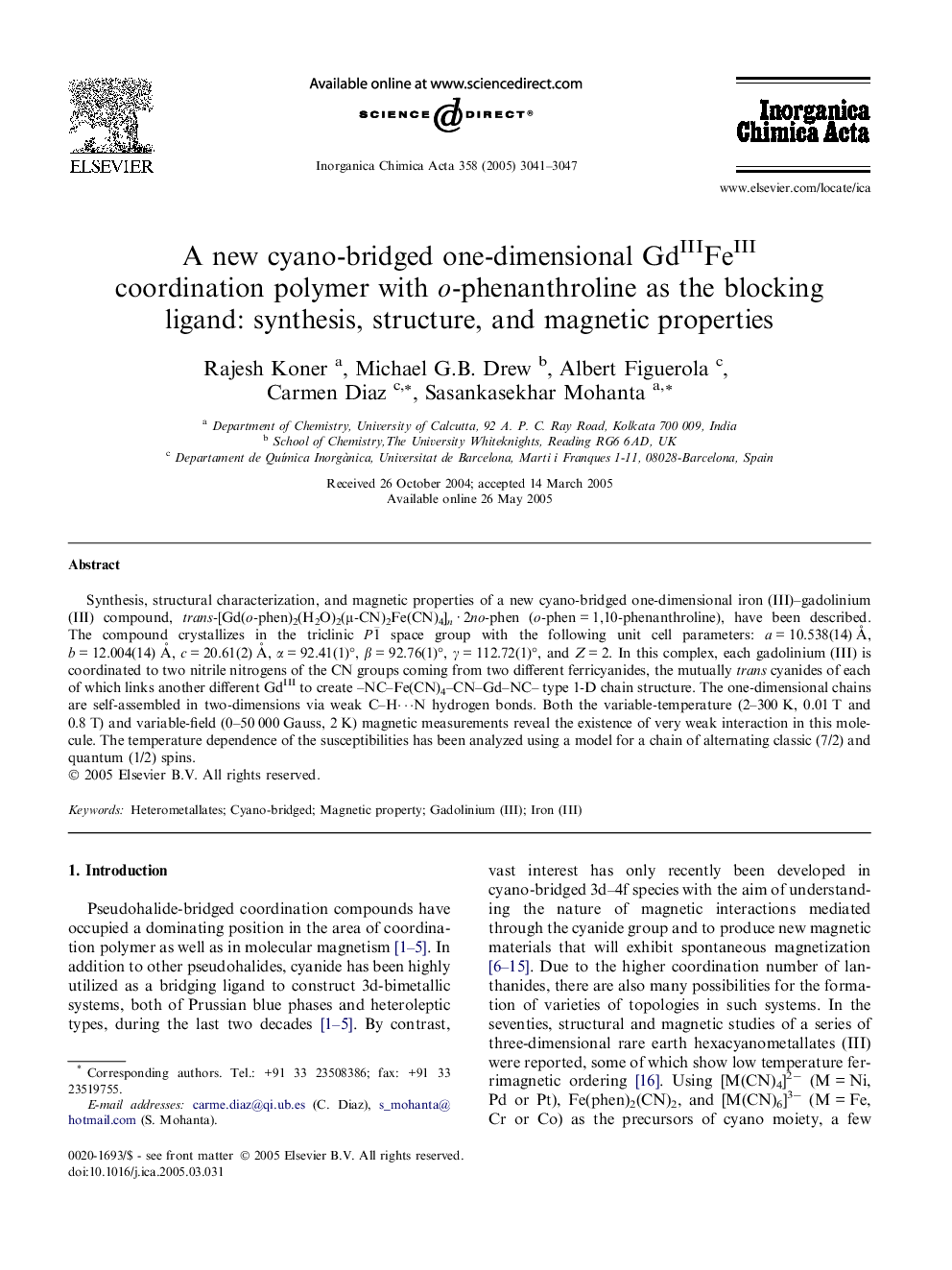| Article ID | Journal | Published Year | Pages | File Type |
|---|---|---|---|---|
| 1310304 | Inorganica Chimica Acta | 2005 | 7 Pages |
Synthesis, structural characterization, and magnetic properties of a new cyano-bridged one-dimensional iron (III)–gadolinium (III) compound, trans-[Gd(o-phen)2(H2O)2(μ-CN)2Fe(CN)4]n · 2no-phen (o-phen = 1,10-phenanthroline), have been described. The compound crystallizes in the triclinic P1¯ space group with the following unit cell parameters: a = 10.538(14) Å, b = 12.004(14) Å, c = 20.61(2) Å, α = 92.41(1)°, β = 92.76(1)°, γ = 112.72(1)°, and Z = 2. In this complex, each gadolinium (III) is coordinated to two nitrile nitrogens of the CN groups coming from two different ferricyanides, the mutually trans cyanides of each of which links another different GdIII to create –NC–Fe(CN)4–CN–Gd–NC– type 1-D chain structure. The one-dimensional chains are self-assembled in two-dimensions via weak C–H⋯N hydrogen bonds. Both the variable-temperature (2–300 K, 0.01 T and 0.8 T) and variable-field (0–50 000 Gauss, 2 K) magnetic measurements reveal the existence of very weak interaction in this molecule. The temperature dependence of the susceptibilities has been analyzed using a model for a chain of alternating classic (7/2) and quantum (1/2) spins.
Graphical abstractSynthesis, structural characterization, and magnetic properties of a new cyano-bridged one-dimensional iron (III)–gadolinium (III) compound, trans-[Gd(o-phen)2(H2O)2(μ-CN)2Fe(CN)4]n · 2no-phen (o-phen = 1,10-phenanthroline), which is self-assembled to two-dimension due to weak C–H⋯N hydrogen bonds, have been described. Both the variable-temperature (2–300 K, 0.01 T and 0.8 T) and variable-field (0–50 000 Gauss, 2 K) magnetic measurements reveal the existence of very weak interaction in this molecule. The temperature dependence of the susceptibilities has been analyzed using a model for a chain of alternating classic (7/2) and quantum (1/2) spins.Figure optionsDownload full-size imageDownload as PowerPoint slide
